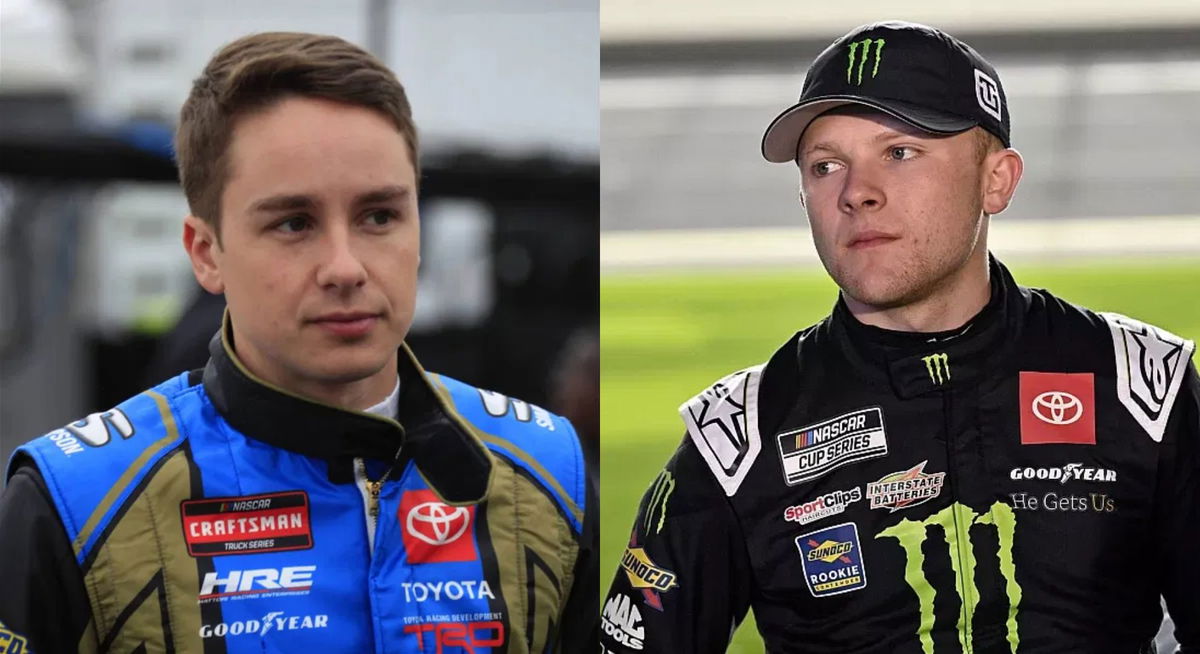

The South Point 400 at Las Vegas had all the makings of a playoff classic. It had intensity, desperation, and one moment that flipped the race on its head. With just 26 laps to go, Christopher Bell tagged teammate Ty Gibbs from behind, sending the No. 54 spinning across the frontstretch. What followed was pure chaos: an 11-car pileup that swallowed up contenders like Shane van Gisbergen and turned the race into a slow-motion mess under caution.
Watch What’s Trending Now!
Bell somehow escaped and clawed his way to a third-place finish, but Gibbs wasn’t so lucky, ending the day 34th with a DNF. Yet, as fans debated whether Bell’s move was intentional or just bad timing, another controversy took over. This time, it had nothing to do with Christopher Bell or Ty Gibbs at all.
ADVERTISEMENT
NASCAR’s extended yellow flag at Las Vegas: What happened?
One of the most talked-about moments at the Las Vegas playoff race was the prolonged yellow flag following a massive 11-car wreck triggered by Christopher Bell spinning Ty Gibbs. The caution lasted eight laps, sparking confusion and frustration on radio channels.
Mike Forde, on the Door Bumper Clear podcast, shared, “I was watching on Twitter and saw everyone talking about it. Everyone on the radio that took four tires were like, ‘What is taking so long?’ Everyone on two tires were like, ‘This is great. This is fantastic.’”
This split reaction arose because teams on two tires benefited greatly from the extended yellow. On the other hand, the drivers on four tires, ready to make them work on the longer run, didn’t get a chance to do so. The delay resulted from logistical challenges in clearing the track. “It took two laps longer than we had hoped,” Forde explained, “because the tow truck needed time to hook the disabled car and get it off pit road before reopening.”
ADVERTISEMENT
NASCAR aims to keep caution periods under six laps, but this incident mirrored a previous yellow at the same race that also lasted eight laps. “The 24 went to pit road, needed a hook. So those two should have been six. They became eight,” Forde noted.
Prior to the Bell-Gibbs incident, with 31 laps remaining, William Byron collided violently with Ty Dillon as Dillon slowed to enter pit road. Byron, running second and battling for the lead, was caught off guard, unaware that Dillon was pitting due to a communication breakdown between spotters. Byron slammed into the back of Dillon’s car at high speed, triggering a severe wreck that ended both drivers’ races and an extended yellow.
ADVERTISEMENT
While officials emphasize safety and pit operations as primary reasons, fans and teams remain divided on the conservative approach that allowed the race to stretch behind the pace car. The incident highlights the balancing act NASCAR faces between keeping races flowing and ensuring safe, fair competition. As playoff drama builds, how NASCAR handles caution periods will be closely watched. And fiercely debated.
Ty Gibbs’ wreck turns the tide for Denny Hamlin
The Christopher Bell-Ty Gibbs incident not only disrupted the race’s rhythm and strategy but also led to Denny Hamlin winning the race. As you see, at the time, Denny Hamlin was running 10th, seemingly out of contention for a win. But this late-race chaos opened the door.
ADVERTISEMENT
Following the restart, Hamlin skillfully passed Kyle Larson and Chase Briscoe, who were on the front row, turning a tough day into a signature victory. Hamlin’s 60th career win tied him with Kevin Harvick for the 10th most all-time and punched his ticket to the Championship 4 in Phoenix for the first time since 2021.
Reflecting on how the wreck changed his day, Hamlin said, “I didn’t think we were going to get 60, but just put the pedal down those last 10 laps and made it happen.” The win symbolized not only a career milestone but a critical momentum boost in the playoffs as Hamlin now heads to Phoenix with renewed championship hopes.
In an emotional post-race moment, Denny Hamlin dedicated his Las Vegas victory to his father, Dennis, who has been battling health issues. Hamlin revealed the immense sacrifices his parents made, nearly losing their home to support his racing dreams. “My dad introduced me to racing when I was five. They sold everything and risked it all,” Hamlin shared tearfully.
ADVERTISEMENT
As the dust settled in Las Vegas, Hamlin’s win felt bigger than just a playoff triumph. It was a full-circle moment built on perseverance, faith, and family. From his parents’ sacrifices to Joe Gibbs’ mentorship, the victory embodied everything that’s defined Hamlin’s career: resilience through chaos, gratitude through struggle, and an unwavering drive to finish strong.
ADVERTISEMENT
ADVERTISEMENT
ADVERTISEMENT

